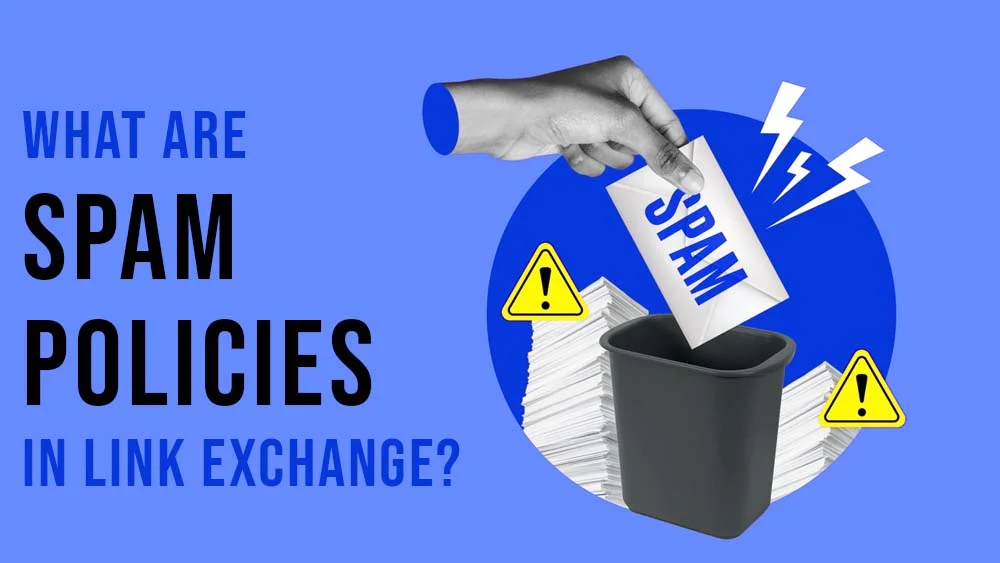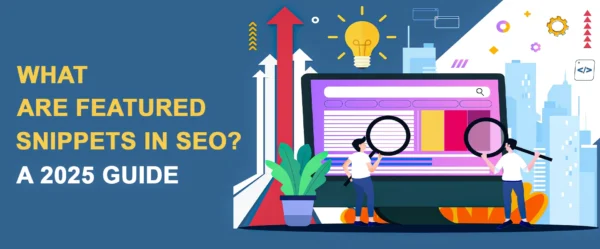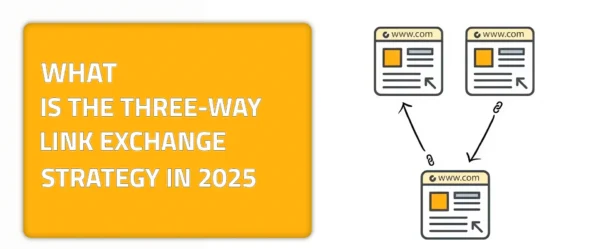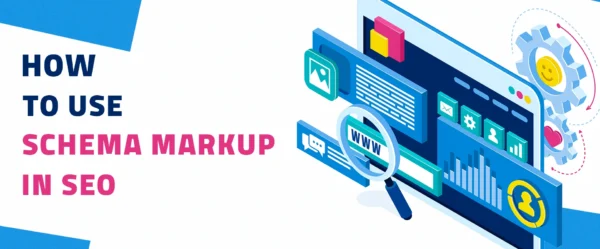Spam Policies for Link Exchange: All You Need to Know
The essence of link exchange is something that only enthusiasts would be interested in. So what are spam policies and how do they affect your SEO? Link exchange is an SEO strategy that is gaining certain popularity. It is where two websites come to an agreement that they should swap links. Why? To enhance each other’s link profiles. Note that some people think that link exchange is a 100 percent safe process to go through. However, the bitter truth is that this is a strategy that has to be executed correctly. Otherwise, you may encounter some misfortunes while you’re implementing it.
This is where understanding spam policies becomes crucial. Spam in link exchange refers to manipulative practices aimed at deceiving search engines and users, which can lead to severe penalties from search engines like Google. You have to be aware of what constitutes spam and adhere to the best practices of link exchange. That is, to maintain your website’s credibility and integrity. In this guide, we will delve into spam policies and understand why they matter. Bear with me and buckle up to understand and learn all there is to learn and understand about link exchange.
The Basics of Link Exchange: Explanation of The Process
Understanding link exchange is something that is essential for your process. Link exchange is a straightforward concept in SEO where two websites agree to link to each other. The main goal of this is for two parties to benefit from each other’s exposure rates and audiences. Additionally, link exchange works to drive more traffic and improve search engine rankings. How does it do that? By pointing out your website to search engines,. Saying that your website is reputable and well-connected enough to be able to exchange links with other sites of high domain authority.
The process doesn’t come without any risks, though. You know people who bet; they always say that they have their “poker” strategy game on. However, if they really didn’t, this is when things get tricky for them and losses become the worst of all. I am not saying that link exchange is a lose-lose game; all I am saying is that a strategy is definitely needed in order to implement such a process while avoiding the risks of penalties applied to you by search engines.
Common practices in link exchange include reciprocal linking, where each site links to the other directly, and triangular linking, where a third site is used to create a more complex link network. Another practice is contextual linking, where links are embedded naturally within relevant content. While these practices are beneficial and can help your strategy, you must proceed with caution and make sure to engage in them in a responsible way.
What Constitutes Spam in Link Exchange?
The word “spam” in link exchange refers to the implementation of unethical practices. Ones that manipulate search engine rankings and may be deceptive for users. Now we all hate it when we get deceived by anyone regarding literally anything. That is why a huge fat penalty is actually applied to people who abuse the use of link exchange. These tactics are completely designed to actually violate the guidelines that search engines are setting for websites. One example that is common and that I can give you is the use of excessive reciprocal linking. This is when two websites unite and become partners in crime for violating some Google guidelines.
They start the process by linking excessively to each other without having any real value to provide for their users through their links or content. Another notorious spam method is creating something called a link farm. This is where large networks of websites are created solely for the purpose of exchanging links, often resulting in a high volume of low-quality, irrelevant links. These schemes unfortunately contribute in harming the reputation and credibility of your website.
Furthermore, people think they are smarting Google out; however, the truth is that they are incredibly easy to spot. Let me give you a small example that I have seen with my own eyes. I was doing my research, and I found a tech blog that was very informative. There was a link that said to click it if I wanted to explore further about the tech-related topic I was researching.
When I clicked it, I was appalled to see that it actually promoted a vape store. With vape liquids and very irrelevant promotions. This is one big red signal for search engines that says “manipulation inserted.” You have to understand how serious these penalties get and how to avoid them in order to raise your website’s authority and increase the trust your audience are giving you.
Link Exchange Guidelines and Practices
Let me get to the point here and state for you some of Google’s important link exchange guidelines. Google, for instance, discourages excessive link exchanges and schemes designed solely to manipulate PageRank. According to Google’s Webmaster Guidelines, exchanging links should be done with caution and only when it makes sense for users. Mutually, Bing and Yahoo also emphasize on the importance of natural and relevant link exchanges. They simply advise you against participating in link schemes or creating links for pure SEO benefits. If you violate those guidelines, all hell will break loose like it did on Dean Winchester in Supernatural’s season 3 finale.
I should’ve added a spoiler alert there but seriously, the series has been out and has ended ages ago. Anyhow, back to black with what will happen if you violate these guidelines. Let’s just say that it could reduce your search rankings, make you lose your credibility, and if we’re going big, it may lead you to lose your website as Google or search engines in general have the authority to remove it. Search engines apply penalties manually or through algorithms that developers automate for such a task. Take Google Penguin’s update for an example. It is simply made to target manipulative link practices. By following these guidelines, you not only protect your website from penalties but also build a stronger, more credible online presence.
Spam Policies: How to Avoid Spammy Practices?
The process of identifying spam links is one that requires enough research from your end. You have to search for the quality of the domain you’re linking to. Quality means that you have to check the domain authority, backlinks, and URL rate in general. You can use tools like SEMrush and Ahrefs to identify if the site you’re exchanging links with is legit or not. Keep in mind that if a site promises numerous backlinks in a short time or insists on reciprocal links without considering content relevance, it’s likely engaging in spammy practices. Ethical link exchange, on the other hand, focuses on building genuine relationships and obtaining links from reputable, relevant sites.
Make sure to reach out to sites that have the same niche as you. Ones that guarantee for you that the content you will be linking to is relevant. Another tool that you can use to evaluate the health of a certain link is Moz’s link explorer. These resources help you assess the domain authority, spam score, and overall link health. By using these tools, you can ensure that your link exchanges are beneficial and avoid the pitfalls of spammy tactics.
The Role of Spam Policies in Maintaining Website Integrity
The role here for spam policies is one that helps you maintain the integrity of your website. You have to adhere to these policies in order to achieve long-term success for your own domain. That is for you to eliminate any risks of facing severe consequences. Some of those may include being de-indexed or experiencing significant drops in search rankings.
For example, case studies have shown how high-profile sites lost their rankings and traffic overnight due to their involvement in link schemes. To avoid such pitfalls, it’s vital to focus on ethical link-building strategies. This means prioritizing quality over quantity, ensuring links are relevant and come from reputable sources.
Regularly auditing your link profile to identify and disavow harmful links is also crucial. Using tools like Google Search Console can help you monitor and maintain a healthy link profile. Additionally, fostering genuine relationships with other websites in your niche can lead to organic link-building opportunities.
Wrapping This Up!
In conclusion, understanding spam policies in link exchange is vital for any website aiming to improve its SEO without risking penalties. We’ve covered the basics of link exchange, identified what constitutes spammy practices, reviewed search engine guidelines, and explored best practices for ethical link exchange.
What’s needed or missing is getting to know the top link exchange platform that can help connect you to various reputable domains and websites. Ones that will help you rank higher and exchange links efficiently. It’s time to check out linkexchange.ai, a platform designed to help you find quality link exchange opportunities and manage your link-building efforts efficiently.










